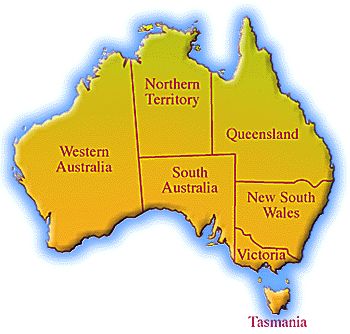Cool caves and warm lakes: Austria's southern Carinthia
 Klagenfurt, Austria - Football fans travelling to Austria this June when it co-hosts the UEFA European Football Championships with Switzerland might not have much time to get to know the country's tourist spots.
Klagenfurt, Austria - Football fans travelling to Austria this June when it co-hosts the UEFA European Football Championships with Switzerland might not have much time to get to know the country's tourist spots.
But if they do decide to take a break from football, travelling to the southern state of Carinthia where a wide variety of excursions are on offer may be an option. Caves, castles and the warmest lakes in Europe are just a few of the attractions.
It's 33 degrees Celsius but holidaymakers standing outside the church in the town of Griffen are putting on warm pullovers as they're about to experience a temperature shock when they visit the local limestone cave where it's just 8 degrees.
"When the weather's bad we have about 16 tours a day, every half hour," says cave guide, Melanie.
Bad weather can mean rain but it can also mean heat and a cloudless sky.
"That's when it gets too hot for outdoor activities and that's why people come to us," she says.
The cave provided shelter for humans 20,000 years ago but was forgotten for a long time.
Not until the World War II and a search for "natural" air raid shelters began were they rediscovered.
Explorers found out that the mountain beneath the ruins of Griffen's castle has as many holes as a Swiss cheese.
The cave is not on the same scale as the larger Obir cave south- east of Klagenfurt but it is regarded as the "most colourful limestone cave" in the country.
Griffen's castle is perched 132 metres high up the mountain. Most of the ruins date from the castle that was built around 1520.
The castle can be reached by a steep path which also serves as a classroom for tourists who want to get to know more about the area's flora and fauna.
The horn and sand vipers that live here can grow up to 80 centimetres long and are the most poisonous snakes in Austria. Carinthia also has 119 different types of spider.
Griffen has just one of the several castles to be found around Klagenfurt.
Another castle is Hochosterwitz which was built in the 16th century.
There's another path that winds its way up to the castle and passes through 14 gates along the mountainside.
In the castle's museum the guide tells the story of Captain Reinhard Schenk who was 2.25 metres tall.
According to the legend when the castle was under siege, Schenk went down to the enemy lines to tell them that he was the smallest and weakest soldier in the castle thus causing the enemy to withdraw.
The museum contains the captain's metal armour which weighs 45 kilograms.
"Schenk really did exist because there are traces of wear and tear on the armour," the museum guide says.
Another interesting castle in Glanegg north-west of Klagenfurt.
A local association revived the castle in 1997 by cleaning away 100 years of weeds and overgrowth. The castle fell into disrepair at the beginning of the 20th century when its owner removed the roof to avoid paying a tax.
"We have about 10,000 visitors a year in addition to festival goers when we rent the castle out," says Isolde Hohenberger from the castle association.
Along with caves and castles, Carinthia also has a lot of lakes which have helped the state become a popular tourist destination. The largest lake is Woerthersee where it's almost impossible to find a parking space in summer.
Another very popular lake is Klopeiner See where the water temperature can reach 28 degrees making it the warmest lake in Europe.
The lake is very shallow and 15 metres from shore, the water still only reaches up to an adult's thigh making it an ideal spot for families.
But the head of the region's tourist office says visitors "should not only have their eyes focused on the lakes" as the area has more than 800 kilometres of hiking routes and just under 1,250 kilometres of bicycle and mountain bike paths.
Some routes lead high up into the mountains where it's cold from the wind.
The village of Diex on the southern slope of the Saualpe mountain range is the sunniest place in Austria with over 2000 hours of sunshine a year.
At the same time it's often 8 degrees cooler here than in Klagenfurt. Thanks to its gentle inclines the Saualpe is suitable for walks with small children.
More experienced trekkers will enjoy touring Peca mountain in Carinthia's southeast.
A cable-car lift takes trekkers up to 1,708 metres where a narrow path leads along the Slovenian border to the 2,114 metre high Feistritzer mountain.
Waist-high stunted pine trees bravely set themselves against the wind that blows strongly from the south.
From the mountain's top you can see all over Carinthia: Saualpe, Woerthersee as well as the airport in Klagenfurt.
You could spend hours here but time is limited as the cable lift closes at 5 pm.
Anyone who misses the last lift has a three-hour walk down to the car park to look forward to.
Internet: www. kaernten. at/english. (dpa)